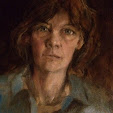There is an old saying that goes something like this: You can give a man a fish and he will eat for a day. You can teach him to fish and he will eat for a lifetime. Over the years I have had many requests from beginner fiddlers to please figure out the fiddle tabs for different tunes. Sometimes I already have the tabs on file. No problem,. I send them out. Sometimes, it’s a pretty easy tune – so I figure them out, add them to the tunes in storage and send them out as well. Sometimes it’s a tune I’ve never heard, an arrangement that I am not familiar with, or time just doesn’t allow it.
Many times people write in and tell me that they have tabbed out many tunes and keep a personal file of them. They print them out and have whole books filled with tunes that they wish to remember. Many of my students do the same thing as they become more proficient at playing by ear.
For fiddlers who haven’t become proficient at reading sheet music or just don’t know how to read sheet music for fiddle, tabs can be a great help. If the tabs (fingering) are written onto the music page – you also have the timing for the notes as a reference. Space doesn’t permit me to go through all the scales that a fiddler might use so I am including the most popular scale for the beginner fiddler here. Another old saying is that a picture is worth a thousand words so here’s a picture:
The names of the notes for the G major scale are (starting from the open G string – G A B C D E F# G (that is your third finger on the D string) A B C D (third finger on the A string) E F# and G (second finger on the E string.)
What does # mean? It means “sharp.” I don’t want to confuse beginners with too much information here, but this means that your second finger or “middle finger” will be set closer to your third finger or “ring finger” than your first finger or “index finger” when placed on the fingerboard. Allow me – another picture:
The best test for this is to find a tune that you have always wished to play that at this point perhaps has been inaccessible to you because alas, you only have the sheet music for it. See that it only shows one sharp # on the staff. This means that it is in the key of G major. Follow the diagram included with this article and try tabbing it out. Does it work? Were you able to play the tune – without music reading ability? Great! You will now fiddle for a lifetime!


